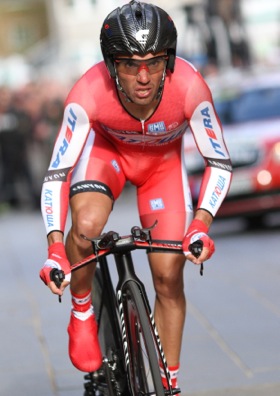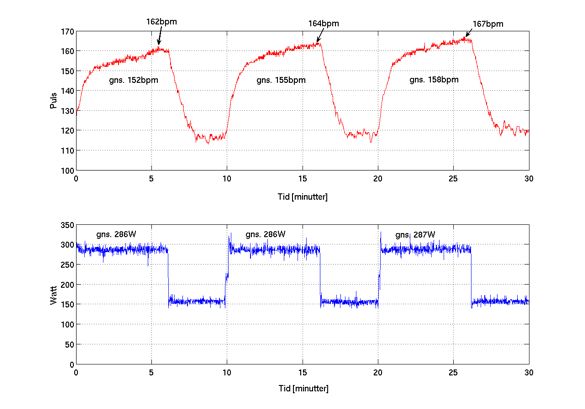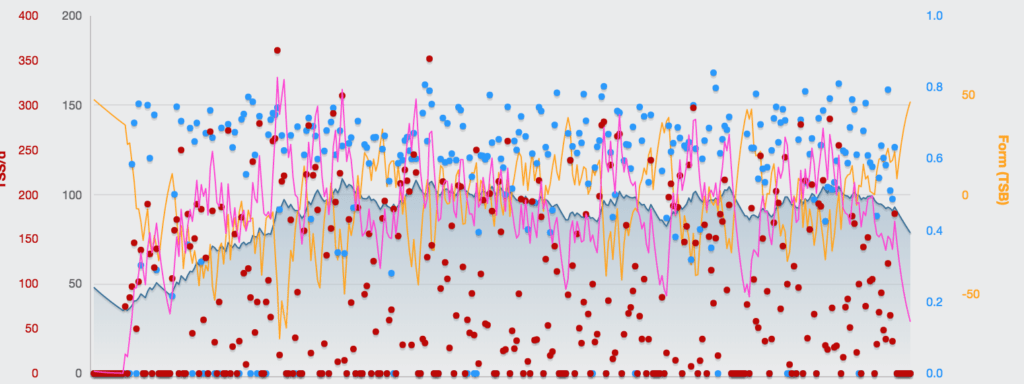As the leaves fall and temperatures dip, many cyclists pack away their bikes, hanging them up until the spring sun beckons them again. However, for the serious road cyclist, this season signifies not an end but a beginning. The onset of winter is the perfect opportunity to start structured training for the forthcoming cycling season.
Ideally, you should be gearing up by November, but if that is not your plan, hit the ground rolling by January 1st at the latest.
It’s not just about logging miles or pushing your limits when embarking on a new season. It’s about understanding and incorporating the philosophy of ‘marginal gains’. But what is this principle, and why is it so critical for cyclists?
Understanding Marginal Gains
Popularized by Dave Brailsford, the renowned British cycling coach, the concept of marginal gains revolves around making tiny, incremental improvements in various areas that, when combined, result in significant overall advancement. In the context of cycling, this could mean fine-tuning your equipment, refining your nutrition, optimizing your recovery, or enhancing your mental preparation.
While each change may seem minuscule or even negligible, collectively, they can profoundly impact your performance. It’s the compound interest of athletic improvement.
How to Implement Marginal Gains for the New Season
1. Equipment Check:
Begin with a comprehensive bike check. Are there parts that could be upgraded? Could ceramic bearings give you that minuscule edge? How about your aerodynamics? It may be time to consider a better-fitting helmet or streamlined clothing. You can spend a lot of money on aero-optimizing, but there are also some low-hanging fruits to collect if you spend time optimizing your body position on the bike.

2. Body Weight Management for Cyclists:
Whether you’re an amateur cyclist just hitting the trails or a professional racer targeting the next big win, body weight management is crucial. Your weight affects not only your speed and endurance but also your overall health and well-being.
3. The Weight-Performance Ratio:
For cyclists, it’s not just about shedding pounds. It’s about achieving a balance where your weight optimally supports your performance. The power-to-weight ratio, often measured in watts per kilogram, plays a significant role in cycling, especially when climbing. A lighter weight can mean faster ascent times, but losing too much can decrease your power output. The goal is to find that sweet spot where you’re light yet powerful.
4. Ditch the Crash Diets:
Quick fixes and fad diets might give immediate results, but they’re often not sustainable and can harm your health. Instead, adopt a holistic approach to nutrition. Focus on a balanced diet rich in lean proteins, whole grains, healthy fats, and plenty of fruits and vegetables. Remember, it’s not just about calorie counting; it’s about nutrient counting.
So, review your current diet. Small dietary changes, like adjusting your carb-loading days or integrating more anti-inflammatory foods, may enhance recovery and boost your energy levels.
5. Stay Hydrated:
Hydration plays a pivotal role in weight management. Drinking adequate water helps in efficient metabolic processes and aids digestion. Plus, it helps differentiate between hunger and thirst, preventing unnecessary snacking.
6. Off-Season Management:
It’s common for athletes to gain a little weight in the off-season. However, it’s essential to ensure that this doesn’t go overboard. Set yourself off-season weight targets and monitor them regularly. This way, when the new season begins, you’re not burdened with excessive weight loss targets.
7. Listen to Your Body:
Every cyclist’s body is unique. While there are general guidelines and standards, it’s essential to listen to your body’s signals. If you’re feeling fatigued, sluggish, or just not “right,” it might be time to reassess your nutrition and weight management strategies.
8. Team Up:
Consider working with a sports nutritionist or coach who can provide personalized advice. They can help you understand your body’s specific needs and guide you towards optimal weight goals without compromising your health or performance.
Body weight management for cyclists isn’t just about aesthetics or hitting a number on the scale. It’s about optimizing your performance, ensuring long-term health, and enjoying the sport you love. By understanding the importance of weight in cycling and adopting a balanced and informed approach, you can achieve and maintain your ideal weight throughout the seasons.
Maximizing Recovery After Training: 5 Essential Tips
Training hard is both demanding and rewarding. To reap the benefits of your effort, focus on the hour immediately following your workout. It’s a golden window when your body is primed for recovery.
Here’s how to make the most of it:
1. Hydrate Immediately:
Although water constitutes around 60% of our body weight and we have built-in buffers against dehydration, the water lost during training significantly impacts performance. Always prioritize rehydration. Under normal conditions, plain water suffices since food replenishes lost electrolytes. However, in extreme heat, it’s imperative to replace both water and electrolytes.
2. Fuel Up with Carbs:
Carbohydrates play a pivotal role in post-workout recovery. Consuming them triggers insulin secretion, a natural hormone that behaves similarly to an anabolic steroid. This boosts glucose uptake from blood into cells, spurs glycogen synthesis, and encourages muscle protein formation.
3. Don’t Skimp on Proteins:
It’s a misconception that only strength trainers or bodybuilders need proteins post-training. Muscles, composed of proteins, undergo wear and tear during exercises. Endurance athletes, too, require immediate protein intake post-training. Apart from aiding muscle repair, proteins, like carbs, also stimulate insulin secretion. This will boost your recovery after hard training sessions or races. Though, it is important to not go overboard.
4. Change Out of Wet Clothes:
Don’t linger in damp workout wear. Swap them out for dry attire right after your session. Engaging in post-race or post-training chats without changing is a common oversight and an easy way to catch a cold. Please stay tuned and change before you start feeling cold. Remember, you are looking for marginal gains, and if you can prevent circumstances that may potentially harm your progress, add it to your training habits.
5. Engage in a Cool Down:
A brief, light-paced ride can work wonders for post-training muscle recovery. Such a ride facilitates the removal of lactate and other waste products from the muscles. Aim for a 5-20 minute gentle cycle post each training session.
In addition to the above, never underestimate the power of sleep. It’s when your body undergoes the most restoration. A solid 7-8 hours of restful sleep each night ensures your muscles heal and energy stores are refilled, preparing you for another day of pushing your limits.
If you have a newer smart phone you can track your sleep pattern over time.
The mind is a powerful asset in any sport. Visualization, meditation, and positive affirmation can carve out pathways for success. Even dedicating just five minutes a day to mental prep can yield dividends in the long run.
Training Routines: The Power of Structured Progression
Training is more than just pedaling your bike or doing random workouts. It’s about having a systematic approach and understanding the delicate interplay between work and recovery. When planning a training routine, one of the most overlooked yet potent strategies is structured progression.

Understanding Structured Progression
Structured progression is the deliberate increase in training intensity, duration, or volume over a period of time. It’s akin to financial compound interest; while you may not notice a significant difference in the short term, over a season or more, these incremental additions can yield profound results.
Here’s how you can harness the power of structured progression:
1. Incremental Increases:
Start by adding a little extra to each training session. This could be as simple as cycling an additional kilometer, adding one more interval set, or increasing your ride’s duration by a few minutes. Over weeks and months, these small additions can equate to hours of added training, leading to noticeable improvements in endurance and strength.
2. Periodization:
Instead of maintaining a uniform training intensity, break your training into periods. Each period should focus on a specific aspect of your fitness, like endurance, strength, or speed. As you move from one period to the next, the training stimuli should change, ensuring that your body is always adapting and improving.

3. Rest and Recovery:
It’s essential to understand that progression doesn’t mean constantly increasing workload without rest. The body improves during recovery. Incorporate regular rest days and lighter training weeks (often termed as ‘taper weeks’) to allow your body to recover, adapt, and grow stronger.
4. Varied Training:
While the idea is to consistently add and progress, ensure that the training remains varied. This not only prevents monotony but also ensures that different muscle groups and energy systems are targeted, leading to holistic improvement.
5. Consistent Tracking:
Use training logs or digital tools to track your progression. This allows you to visualize your growth and make necessary adjustments when plateaus are reached. I believe there is a great potential in tracking your efforts and make more decisions based on data analysis, less on gut feelings. You can use an Excel document or a cloud solution like Trainingpeaks. Also, there is actually evidence that you are more likely to stick to your training program or diet if you write down your goals and keep track of them.
Why Marginal Gains Matter in Training
The philosophy of marginal gains aligns seamlessly with structured progression. While it’s tempting to make significant leaps in training, aiming for modest, consistent improvements is more sustainable and less likely to lead to injury or burnout.
Imagine adding just 1% more effort or time to your training sessions. Independently, this seems inconsequential. However, compounded over a year, this could mean many hours of additional training, which translates to more considerable speed, strength, and endurance gains.
Moreover, this approach psychologically conditions an athlete to embrace a growth mindset. By celebrating small victories daily, motivation remains high, and the journey of improvement becomes as rewarding as the destination.
Training is both an art and a science. While talent and hard work are key ingredients for success, the methodology with which you approach your training can be the difference between good and great. Embrace structured progression, understand the power of marginal gains in your training routine, and watch as you unlock levels of performance you previously thought were out of reach.

Why Start in Winter?
Winter offers the ideal canvas for the marginal gains strategy. With fewer races and outdoor activities, it provides ample time for experimentation, assessment, and fine-tuning. Instead of waiting for spring to scramble and prep, winter allows you a methodical approach to lay down a solid foundation.
Moreover, the psychological benefit of knowing you’re working hard, making those small, crucial tweaks while others are resting, can give you an invaluable competitive edge.
Training volume is a crucial aspect of a cyclist’s regimen, often denoted by the total hours or kilometers ridden.
Come November, as you’re laying the foundation for the forthcoming season, it’s advisable to start at about half the volume you’re targeting for March. Think of this period as a preparatory phase, allowing your body to adjust gradually without the shock of an immediate, intense workload.
By March, when you’re ramping up for top performance, your training volume should be at its highest. This deliberate build-up not only aids in physical conditioning but also mentally prepares you for the demanding race season ahead.
However, as April approaches and race season begins, it’s wise to slightly dial back on the volume. This strategic reduction ensures that while you maintain your hard-earned fitness, you also stay fresh and agile, ready to tackle the races with optimal vigor and reduced risk of fatigue or overtraining.
This cycle of progressive build-up followed by a calculated taper is instrumental in achieving both peak performance and sustained race-readiness.
In Conclusion
As you embark on this new cycling season, remember that success isn’t just about monumental leaps; it’s about the consistent, tiny steps forward. Embrace the philosophy of marginal gains, and by the time the flowers start to bloom, you’ll be in prime position to dominate the roads.
Kickstart your journey now, focus on the granular details, and let this winter be the springboard to your most successful cycling season yet! Starting a New Cycling Season: Harness the Power of Marginal Gains
